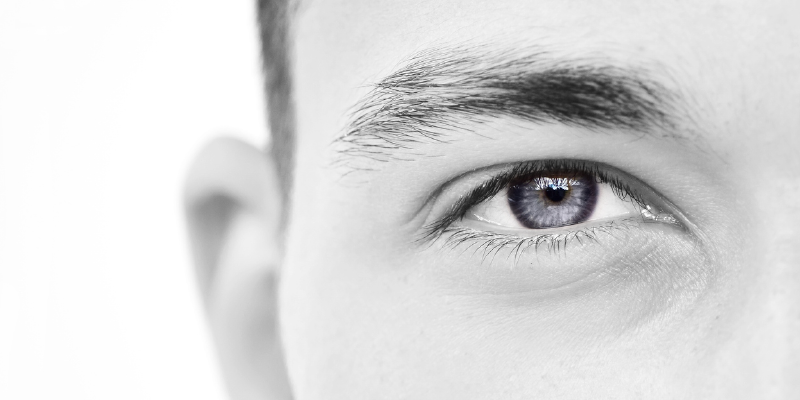Many people who routinely struggle to manage dry, red, itchy, and uncomfortable eyes assume that eye allergies are to blame. While allergies can certainly contribute to eye discomfort, these same symptoms can also be a sign of a common inflammatory condition known as blepharitis.
Blepharitis has long been connected with an overpopulation of Demodex mites that, in smaller numbers, are usually harmless. When too many of these mites and bacteria accumulate on your eyelids and eyelashes, however, they can cause chronic eye inflammation and symptoms like redness, itching, burning, swelling, dry eye, sensitivity to light, and blurred vision [1].
That’s the bad news. The good news is that there are some things you can do on your own to better manage symptoms of blepharitis and reduce the number of Demodex mites that inhabit your lid margins.
1. Omega-3 Supplements

One of the contributing factors of blepharitis symptoms is meibomian gland dysfunction (MGD), which hinders the eye’s ability to secrete adequate oils to keep your eyes properly lubricated. The result is often dry, irritated eyes, and a “gritty” sensation. To help manage MGD and blepharitis, you can try adding an omega-3 supplement to your diet, in the form of fish oil, flaxseed oil, or sea buckthorn oil.
Omega-3 fatty acids are considered essential fatty acids, meaning that your body cannot produce them on its own and therefore needs to obtain them from outside sources. If you’re not getting enough omega-3 fatty acids in your diet, you may notice dry eye symptoms that can exacerbate blepharitis. Adding the right omega-3 supplement to your diet, then, may help to increase the oil content of your tears and alleviate your symptoms [2].
When selecting an omega-3 supplement, make sure that it comes in an opaque container because exposure to light can decrease its effectiveness. You should also be aware that fatty acid supplements can thin the blood and pose a risk for excess bleeding, so if these are concerns, talk to your doctor before starting a new supplement.
2. Warm Compresses

One telltale sign of blepharitis is waking up with excessively crusty eyelids. If you can relate, try applying a warm compress to your eyelids for a few minutes as soon as you wake up and right before going to bed at night. To do this, you can dampen a washcloth with warm water, either plain or with salt added.
After following this regimen for about two weeks, you should notice an improvement in crusty eyelids and uncomfortable eyes [3].
3. Reduce Screen Time

Staring at screens all day is a part of most of our daily work routines, but this habit can lead to dry, red, and sore eyes. When you’re engaged in near-sighted activities like working on a computer or reading a book (or e-book), you tend to blink less frequently than you would if you were looking at something far away. Then, when you don’t blink as much as normal, your eyes can become uncomfortably dry, worsening existing conditions like blepharitis.
To avoid this, make a conscious effort to give your eyes a break from all screens for at least 20 seconds every 20 or 30 minutes. Look at something at least 20 feet away from you and make sure you blink.
4. Cleanse with 4-Terpineol

Practicing good eyelid hygiene is one of the most effective steps you can take to help alleviate blepharitis symptoms. When dealing with an infestation of Demodex mites, you need to use a cleansing product that will 1) effectively eliminate Demodex and 2) remain gentle and non-irritating to your eyes.
Studies have shown that, when isolated, 4-Terpineol is the most effective compound in tea tree oil for eliminating Demodex [4]. Cliradex is currently the only commercially available product that contains isolated 4-Terpineol for optimal eyelid hygiene. This line of products is also preservative-free and non-irritating, making them safe, gentle, and convenient for regular use.
[1] Liu, J., Sheha, H., & Tseng, S. C. (2010). Pathogenic role of Demodex mites in blepharitis. Current opinion in allergy and clinical immunology, 10(5), 505.
[2] Omega-3s: What They Can Do for You – Review of Optometry
[3] Managing Blepharitis: Tried-and-True and New Approaches – American Academy of Ophthalmology
[4] Tighe, S., Gao, Y. Y., & Tseng, S. C. (2013). Terpinen-4-ol is the most active ingredient of tea tree oil to kill Demodex mites. Translational vision science & technology, 2(7), 2-2.




